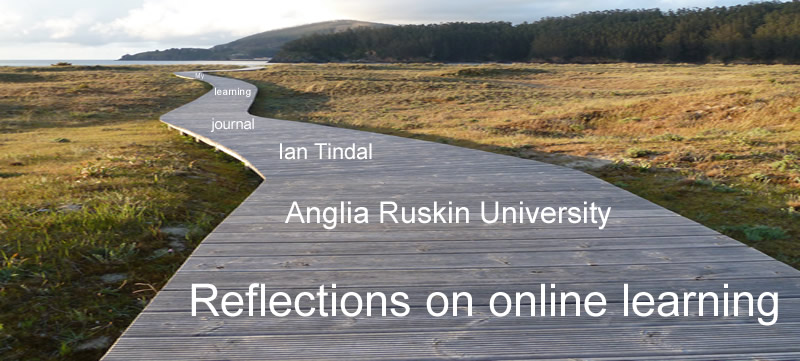Two day meeting with the Technology Enhanced Learning Mapping group making progress towards developing a road map for the future. I think I need to indulge in some introspection to make sense of what happened. I had a very productive 6 hour journey up from Liskeard to Manchester still somewhat baffled as to why a first class ticket was cheaper than a standard one and why a first class ticket was not available had I started at Bodmin Parkway 7 miles down the track from Liskeard - there were only two others in the carriage for the first hour or so and it never got filled. I made progress towards mapping the Ultraversity online community model and reflected on what it might look like in the future.
It is always refreshing to meet colleagues from The Ultralab and review foundations I have met with Stephen Powell and Richard Millwood a few times and published with them since we went our separate ways but this was the first reunion with Pete Bradshaw since 2006 many days had passed but it felt seamless. We grabbed the essence of The Ultralab, rekindled the flame in a few bytes of intense discussion. It was great meeting Li Yuan after so many emails, Li was who I expected Li to be - are we getting more adept at knowing who people are from text I wonder.
We spent the first afternoon with the cluster getting to know each other and Bill Olivier and Richard facilitating a review of TEL MAP aspirations and what was done in the previous meeting as many of us were new to the cluster. Over coffee, and later over the evening meal, new collaborations were developed and ideas for projects emerged tangential to the main focus.
The previous meeting had lead to a set of Axes to try and define what is. In attempting to define what might be, we sketched them and placed our selves and institutions in the diagram and then tried to vector towards the future. We got slightly distracted into semantics and discussed the linguistic problems of commonly used labels. ‘Face-to-Face’ placed as the other end of the spectrum to ‘Online’ was not a comfortable axis. As a fully online course facilitator I spend a fair bit of time Face to Face with colleagues and students in real conversations via online digital interfaces even though we are often hundreds of miles apart. Situated, located, dislocated, remote, nothing quite fitted.
We considered how the weight of institutional needs such as economics exerted a gravitational pull and whether axes would converge towards a singularity. Debbie Holley's paper cone was pulling this kind of convergence into the concept:
It became fairly clear that there were several places on the diagram where the future would draw in, to differing extents, a range of elements to develop new models appropriate to clusters in the heterogeneous mass of individuals (students and staff) with different needs. Fully online is fine for some learning contexts, it works very well for the Ultraversity process driven work focused context for example, however; Students such as aspiring sculptors would have call for real world resources - an online furnace for smelting bronze is beyond current technology so is an online mass spectrometer. Do those needs require students to spend significant proportions of their study time at institutions or might they work largely from home and draw on the physical resources that are geographically nearest their home? Some horse trading swapping students and resources in the short term between institutions might be possible and would save travel and accommodation impact.
Defining our personal visions via a google Drive Spreadsheet and pulling together the commonality was quite a task but there was not a lot of disagreement the difficulty was getting the terminology right. Richard used http://cmap.ihmc.us/ to build the common map - a great piece of software. Vana Kamtsiou suggested stickies and Debbie and I went with that route. I was totally impressed with how much Debbie fitted onto one sticky. It was lovely watching two levels of technology working together glued by dialogue.
So where did we end up? The Cmap is a good starting point defining some elements of a possible future landscape but is still a haiku compared to the complexity of the full landscape. it became clear that roadmapping the potential futures is not a case of building one autovia, HE institutions sit in a culturally and aspirationally diverse landscape, the future holds some certainties but a vast amount of uncertainties. Stephen Heppell coined this well with his 'certainty of uncertainty' concept and Steve Wheeler also has some good thoughts on digital futures.
So we have a partial future landscape and some thoughts on a network of roads that we might travel through that landscape. As the train flows along the Cornish coast I wonder whether we need these roads - there is something wonderful about the open potential of the sea as long as we avoid the head in the sand feet in the clouds and eyes looking at the past inversion I am sure we can find many ways of letting technology enable 'happy and engaged students' to journey alongside 'happy and engaged tutors' as co-learners heading towards a fulfilling and empowered future.






No comments:
Post a Comment
Note: only a member of this blog may post a comment.